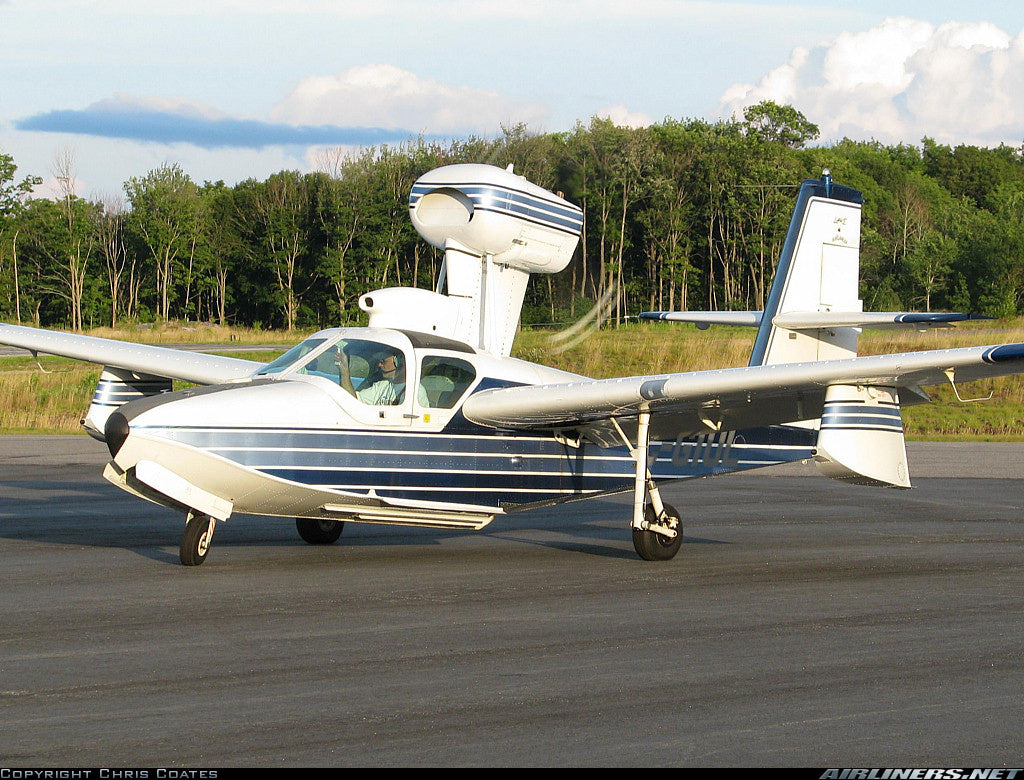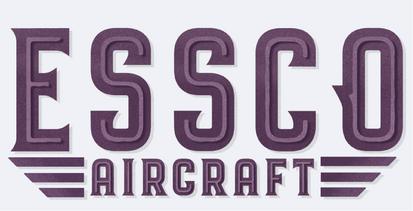
Number 56 of 100 in 100: The Lake Buccaneer 🛩️🌊
Conceptualization:
The Lake Buccaneer was designed with a clear goal in mind: to give pilots the freedom to fly anywhere, whether over land or water. Back in the 1950s and 60s, more people were getting into recreational flying, and they wanted planes that weren’t just restricted to runways. The Lake Buccaneer, initially developed by Colonial Aircraft and later taken over by Lake Aircraft, was the answer. It tapped into this growing thirst for adventure, giving pilots a plane that could seamlessly operate on water and land, opening up a whole new world of exploration.
Original Design:
What makes the Lake Buccaneer stand out is its thoughtful, amphibious design. It’s got a boat-shaped hull, which makes water landings feel smooth and natural. Add to that the pusher-propeller configuration (where the propeller is behind the engine), and you’ve got a setup that keeps the engine safe from water spray. Plus, it’s equipped with retractable tricycle landing gear, which means you can land on both water and traditional runways with ease. Its cantilever, shoulder-wing design gives excellent visibility, which is especially handy when you’re flying over water or in remote areas. Inside, it’s roomy and simple, perfect for both pilots who are training and those who just want to get out and explore.

Photo Credit: airliners.net - Lukas Rösler
Principal Designer:
The man behind the Lake Buccaneer was David Thurston, who specialized in designing amphibious aircraft. Thurston had already made a name for himself with the Colonial Skimmer, a predecessor to the Buccaneer, and when Lake Aircraft acquired the design, he took it to the next level. His designs focused on making amphibious flying accessible and affordable, and the Buccaneer is a testament to that vision. His work with Lake Aircraft defined his career and his contributions to amphibious aviation left a lasting mark.
Production Run:
Production of the Lake Buccaneer began in 1969 and continued through the 1970s and 80s, during which over 1,000 units were built. These aircraft were particularly popular among recreational pilots and bush operators who needed a reliable plane that could handle both land and water. Although production slowed down in the 1990s due to increased costs and competition from newer aircraft, the Buccaneer remained a beloved choice for many. By the mid-2000s, production had stopped, but a loyal community of pilots continues to fly and maintain these versatile planes today.
Evolution:
Over its lifetime, the Lake Buccaneer saw several improvements. The original LA-4 model had a 180-horsepower Lycoming O-360 engine, but that was soon upgraded to 200 horsepower Lycoming IO-360 with the LA-4-200, giving it better takeoff performance and a higher payload. Other aircraft, like the LA-250 Renegade added even more power and interior space, catering to pilots who wanted more comfort or needed to carry additional gear. The Lake 270T Seafury, offered the most power with a turbocharged 270-horsepower Lycoming TIO-540 engine, pushing the boundaries of what this amphibious aircraft could do.

Photo Credit: airliners.net - Chris Coates
Specifications:
Specifications (LA-4-200 Buccaneer):
General characteristics
- Crew: one
- Capacity: three passengers
- Length: 24 ft 11 in (7.59 m)
- Wingspan: 38 ft 0 in (11.58 m)
- Height: 9 ft 4 in (2.84 m)
- Wing area: 170 sq ft (16 m2)
- Empty weight: 1,555 lb (705 kg)
- Gross weight: 2,690 lb (1,220 kg)
- Powerplant: 1 × Avco Lycoming IO-360-A1B piston engine, 200 hp (150 kW)
Performance
- Stall speed: 45 mph (72 km/h, 39 kn)
- Never exceed speed: 154 mph (248 km/h, 134 kn)
- Range: 825 mi (1,328 km, 717 nmi)
- Service ceiling: 14,700 ft (4,500 m)
Comparison to Other Aircraft in its Class:
The Lake Buccaneer offers strong competition against other amphibious aircraft like the Cessna 172 Floatplane and Maule M-7-235 Amphibian, excelling in areas such as amphibious versatility, efficient water operations, and compact design. Its integrated boat hull allows for smoother water handling compared to the higher drag and bulkier floats of competitors, while its smaller frame enhances maneuverability in tight or remote areas. With a cruise speed of 110 knots, it surpasses some floatplanes in speed. While the Maule M-7 and Cessna 172 Floatplane are better suited for pilots needing more space or power, the Buccaneer remains an affordable and practical choice for pilots prioritizing amphibious versatility and exploring remote water locations.
Performance:
V-Speeds:
- Vne (Never Exceed Speed): 145 knots (167 mph, 268 km/h)
- Vno (Maximum Structural Cruising Speed): 120 knots (138 mph, 222 km/h)
- Va (Maneuvering Speed): 102 knots (117 mph, 189 km/h)
- Vfe (Maximum Flap Extended Speed): 85 knots (98 mph, 157 km/h)
- Vs (Stall Speed, Clean): 39 knots (45 mph, 72 km/h)
- Vso (Stall Speed, Landing Configuration): 52 knots (60 mph, 96 km/h)
- Vr (Rotation Speed): 60 knots (69 mph, 111 km/h)
- Vx (Best Angle of Climb): 65 knots (75 mph, 121 km/h)
- Vy (Best Rate of Climb): 85 knots (98 mph, 157 km/h)
G-Load Limitations:
- Positive G limits (Normal Category): +3.8 G
- Negative G limits (Normal Category): -1.52 G
Performance Assessment:
The Lake Buccaneer is well-suited for both training and personal aviation due to its forgiving performance characteristics. Its low stall speed of 39 knots and stable handling make it an ideal trainer for pilots learning amphibious operations, allowing them to practice landings on both water and land with confidence. With a maneuvering speed of 102 knots, students can safely practice slow flight and steep turns, building their skills before advancing to more complex aircraft. The aircraft's short takeoff and landing distances further enhance its suitability for training, particularly in remote areas where such skills are essential. For personal use, the Buccaneer's 110-knot cruise speed offers a quick and enjoyable way to travel between destinations, especially for recreational pilots exploring lakes or coastal areas. Its amphibious landing gear gives pilots the freedom to land on both water and land, offering flexibility in trip planning and destination choice. The aircraft’s gentle stall characteristics and predictable flight envelope reduce pilot workload during challenging water landings, while its G-load limitations (+3.8 and -1.52 G) ensure stability during typical recreational maneuvers. Overall, the Lake Buccaneer's strong hull design and pusher propeller make it particularly well-suited for water operations, offering smooth takeoffs and landings even in rough water conditions. This balance of simplicity, versatility, and performance makes it an excellent choice for both training and adventurous personal flying.

Photo Credit: airliners.net - Michael Ivanin
Safety Record:
The safety record of the Lake Buccaneer is generally solid, though there are a few things to keep in mind. Water operations can be tricky, especially in rough conditions, and there have been incidents related to landing gear failures during transitions between water and land. Corrosion is also a common issue for amphibious aircraft, particularly if they’re frequently exposed to saltwater. Despite these concerns, the Buccaneer’s overall safety is on par with other amphibious planes, and many accidents have been linked to pilot error rather than design flaws.
Acquisition Cost:
When the Lake Buccaneer first hit the market in the early 1970s, it sold for around $16,000 to $20,000, making it a relatively affordable option for private pilots looking to own an amphibious aircraft. Fast forward to today, and you can expect to pay between $70,000 and $120,000 for a used Buccaneer, depending on its condition and upgrades. The price increase is typical for used aircraft, especially given the demand for well-maintained amphibious planes like the Buccaneer.
Conclusion:
The Lake Buccaneer continues to be a beloved choice for pilots looking for a versatile amphibious aircraft that can handle both land and water. Its rugged design, combined with ongoing improvements throughout its production, has made it a go-to for recreational flying and bush operations alike. While it requires careful maintenance and an experienced hand for water operations, the Buccaneer’s reliability, performance, and enduring appeal have kept it in demand even decades after its introduction. Whether you're flying for fun or exploring remote locations, the Lake Buccaneer offers a unique flying experience that few other planes can match.

Photo Credit: airliners.net - Joost de Wit
Bibliography:
NTSB Aviation Accident Database
Airliners.net – Lake Buccaneer
Essco Links:
